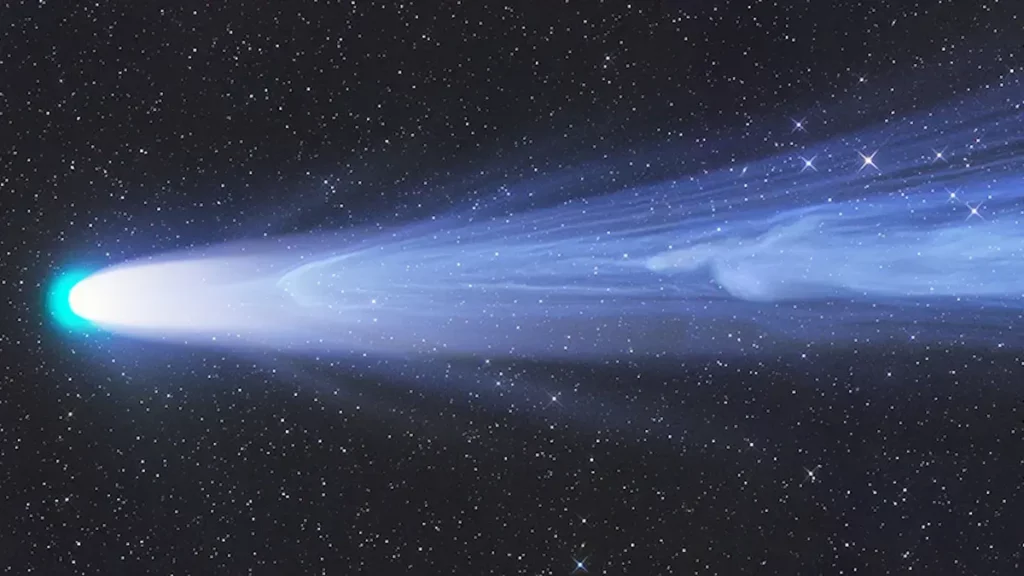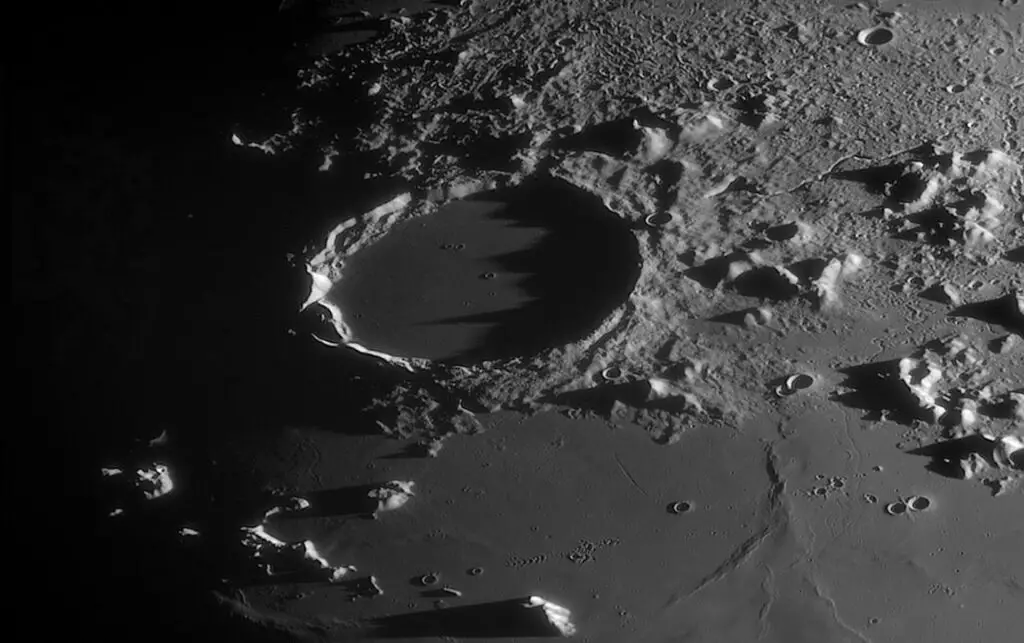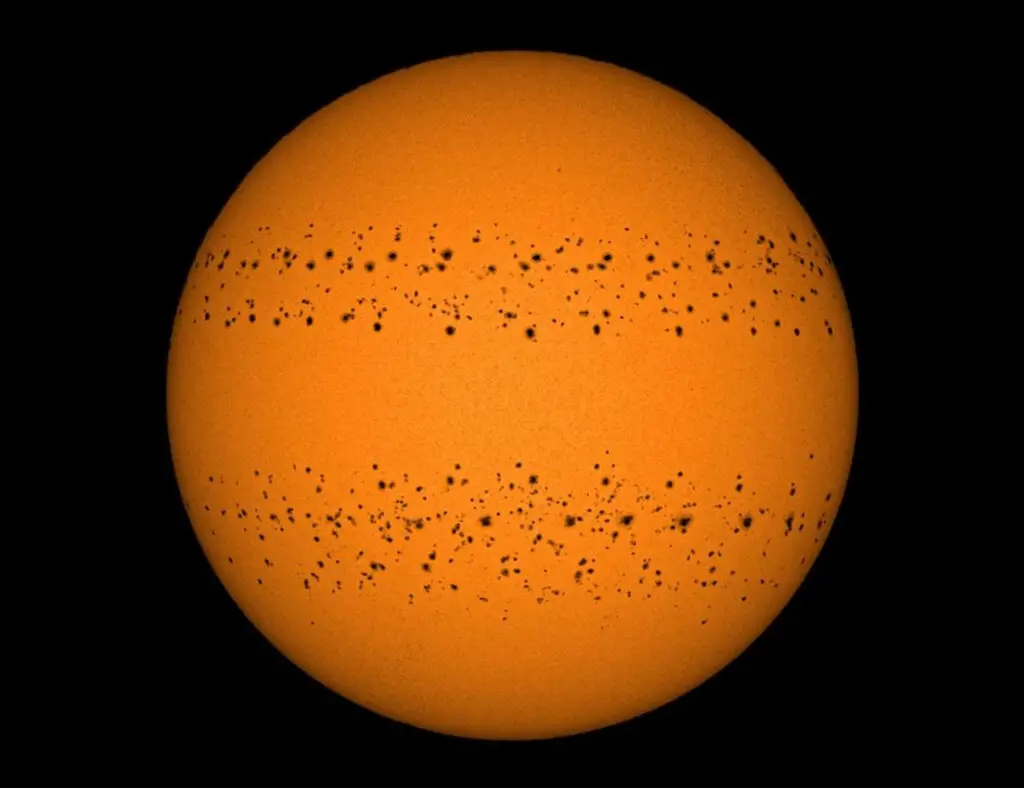Gerald Rhemann’s award-winning Image of Comet Leonard mesmerizes with its ethereal tail, showcasing the captivating beauty of this celestial phenomenon captured during its closest approach to Earth.

Table of Contents
Introduction
The Royal Observatory Greenwich’s Astronomy Photographer of the Year competition celebrates exceptional celestial images captured by talented photographers worldwide. Among the extraordinary winners, one image stands out as an awe-inspiring masterpiece that challenges the notion of being an artist’s illustration. Austrian photographer Gerald Rhemann’s remarkable image of Comet Leonard and its ethereal glowing tail has claimed the top spot in the competition. Let’s explore the details of this captivating image and discover the other remarkable category winners in this prestigious competition.
Watch it as a video instead:
The Winning Image of Comet Leonard: Comet Leonard’s Enchanting Tail
Gerald Rhemann’s award-winning photograph captured the majestic image of Comet Leonard and its mesmerizing tail on Christmas Day, 2021, from Namibia. The image provides a celestial view of the gas cloud surrounding the comet being swept away by solar wind as it traversed the central Solar System.
Attention Stargazers: Rare Planet Parade Visible This Month
Comet Leonard’s Ghostly Glow
Comet Leonard, discovered just a month prior to Rhemann’s photograph, revealed its ghostly glow as it made its closest approach to Earth. The interaction of charged particles from its tail with the solar wind resulted in a captivating luminosity. Rhemann seized the opportunity to capture this mesmerizing phenomenon before Comet Leonard embarked on its journey away from Earth, destined for interstellar space.
Exquisite Category Winners
The Astronomy Photographer of the Year competition recognized other exceptional submissions across various categories. One standout winner is the photograph titled “Andromeda Galaxy: The Neighbor,” captured by 14-year-olds Yang Hanwen and Zhou Zezhen from China. Their image presents a captivating view of our closest galaxy, showcasing the immense beauty of the cosmos.
Lunar Majesty: Shadows on the Moon’s Surface
Martin Lewis from the United Kingdom emerged victorious in the Moon category with an image that highlights shadows cast across the vast Plato crater. The photograph showcases the fascinating lunar landscape while paying homage to the historic Apollo 11 moon landing site.

Celestial Silhouette: People and Space Winner
American photographer Andrew McCarthy’s captivating image, which won the People and Space category, portrays the silhouette of the International Space Station (ISS) against the backdrop of the Sea of Tranquility. This site holds historical significance as the landing site of the Apollo 11 mission, adding a sense of cosmic wonder to the composition.
Sunspots in Motion: A Year in the Sun
Indian photographer Soumyadeep Mukherjee triumphed in the Sun category with his image titled “A Year in the Sun.” The photograph depicts the movement of sunspots, cooler regions on the Sun’s surface, throughout the course of a year. It offers a glimpse into the dynamic nature of our nearest star.

Appreciating the Gallery
The Royal Museums Greenwich’s contest website proudly displays image of comet Leonard and a full gallery of all the winners and runners-up, inviting viewers to immerse themselves in the astonishing beauty of the cosmos. Each image captures the majesty of the universe and the skill of the photographers who captured these fleeting moments.
From Virtual to Physical: On Display at the National Maritime Museum
For those eager to witness these celestial wonders in person, the award-winning photographs are currently exhibited at the National Maritime Museum in London. This opportunity allows visitors to experience firsthand the awe-inspiring images that have garnered international acclaim.
Conclusion
The Royal Observatory Greenwich’s Astronomy Photographer of the Year competition celebrates the exceptional talent of photographers who capture the celestial wonders that grace our night sky. Gerald Rhemann’s award-winning image of Comet Leonard and its glowing tail challenges the boundaries of artistic illustration.
As we explore the other category winners, we are reminded of the breathtaking beauty and limitless mysteries of the universe. These remarkable photographs ignite a sense of wonder and invite us to appreciate the vastness of space and the wonders that await our exploration.
Reference(s):


Just a quick correction: Apollo 11 landed on the Sea of Tranquility as specified in one of Neil Armstrong’s first comments after landing, “Houston: Tranquility Base here. The Eagle has landed.” No disrespect to Plato intended.